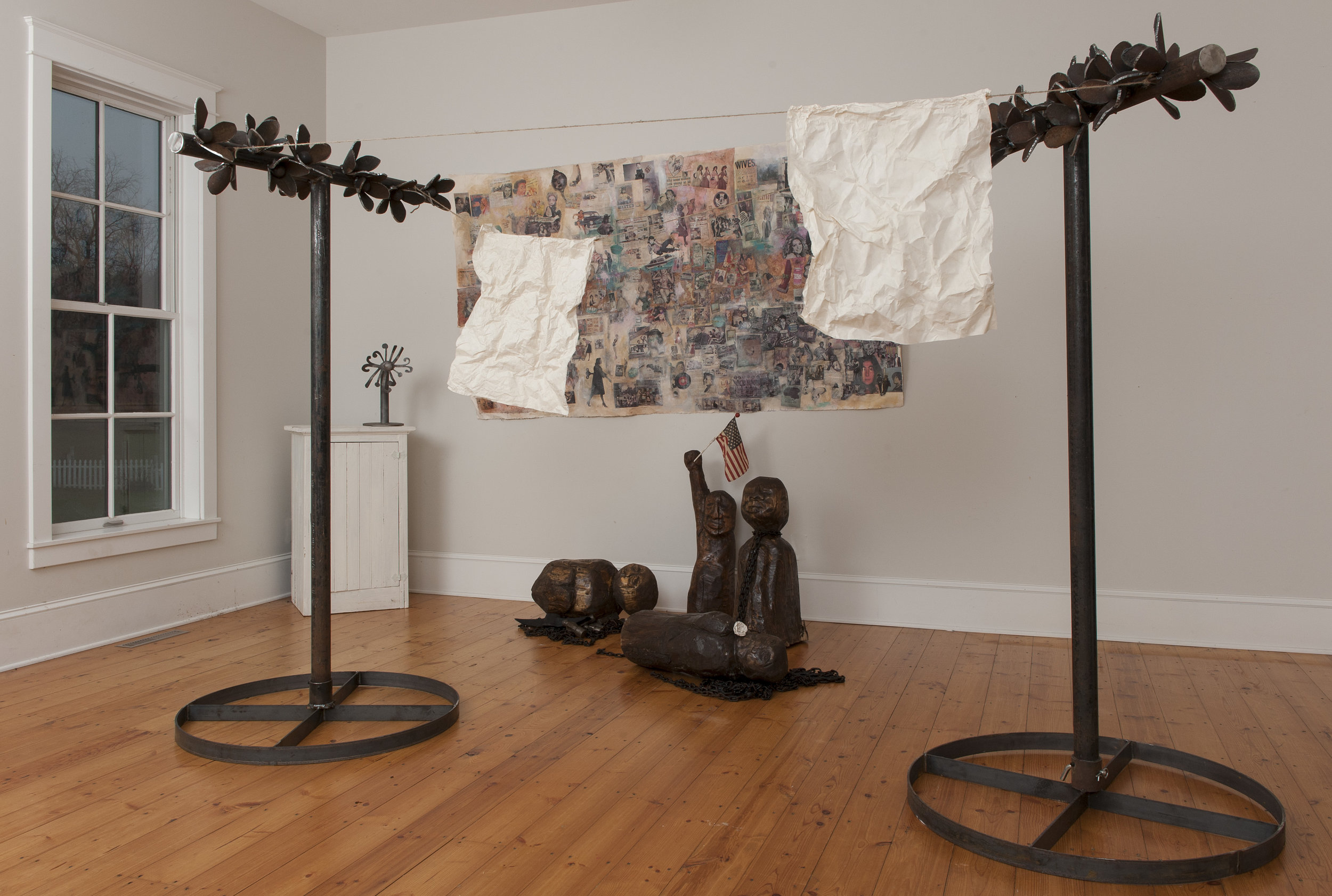Justice for all cannot happen if we ignore wrongdoing
Who designed your line? Lines can be self-imposed or outlines we designed by ourselves. Lines are deeply seated in history, a history that deliberately drew lines that excluded some and allowed others to stand in the front. How has a line shaped your present reality?
The practice of racial inequality is sustained by lines. Barriers, divisions and blockades passed down, created by previous societies. What lines have you constructed in your life. What about your bloodline? A crooked, shifting, maybe a gerrymandering line, maybe a line that imprisoned or barred. A poverty line… redlining.
Do you stand in the front of the line? What about the back of the line? Have you ever called a hotline? Or maybe you tiptoed over a borderline? A clothesline where our dirty laundry hangs for all to see. Corporations often skip the line. Why do billionaires get to cut in line?
These skillfully drawn lines never occur by accident. How can we move towards a society that restores dignity, especially to those most vulnerable?
Check out the Hidden In Plain Sight Art Catalog and Fable here.
For more information visit: http://www.hidden-in-plain-sight.org
“Kelly Parks Snider is a friend of mine. She brought me into this project at the beginning, and I’ve been amazed to watch how she has imagined it, prepared it, and unwrapped it.”

Insistent, strongly targeted marketing images and catchy, convincing slogans. A three-panel collage juxtaposes woman’s century of struggle for equality against these calling cards of advertising. Below the horizontal line lies the truth of her protests, and her victories over the decades. Above the line, the many lies and misrepresentations of the advertising industry. The final panel depicts where society is now, not knowing what is real and true.
Oil, watercolor, pencil, fabric, encaustic, newspaper, printed reproductions, photographs on wood boards.Three panels each 4’x7. 5’

Wood and steel, Size varies
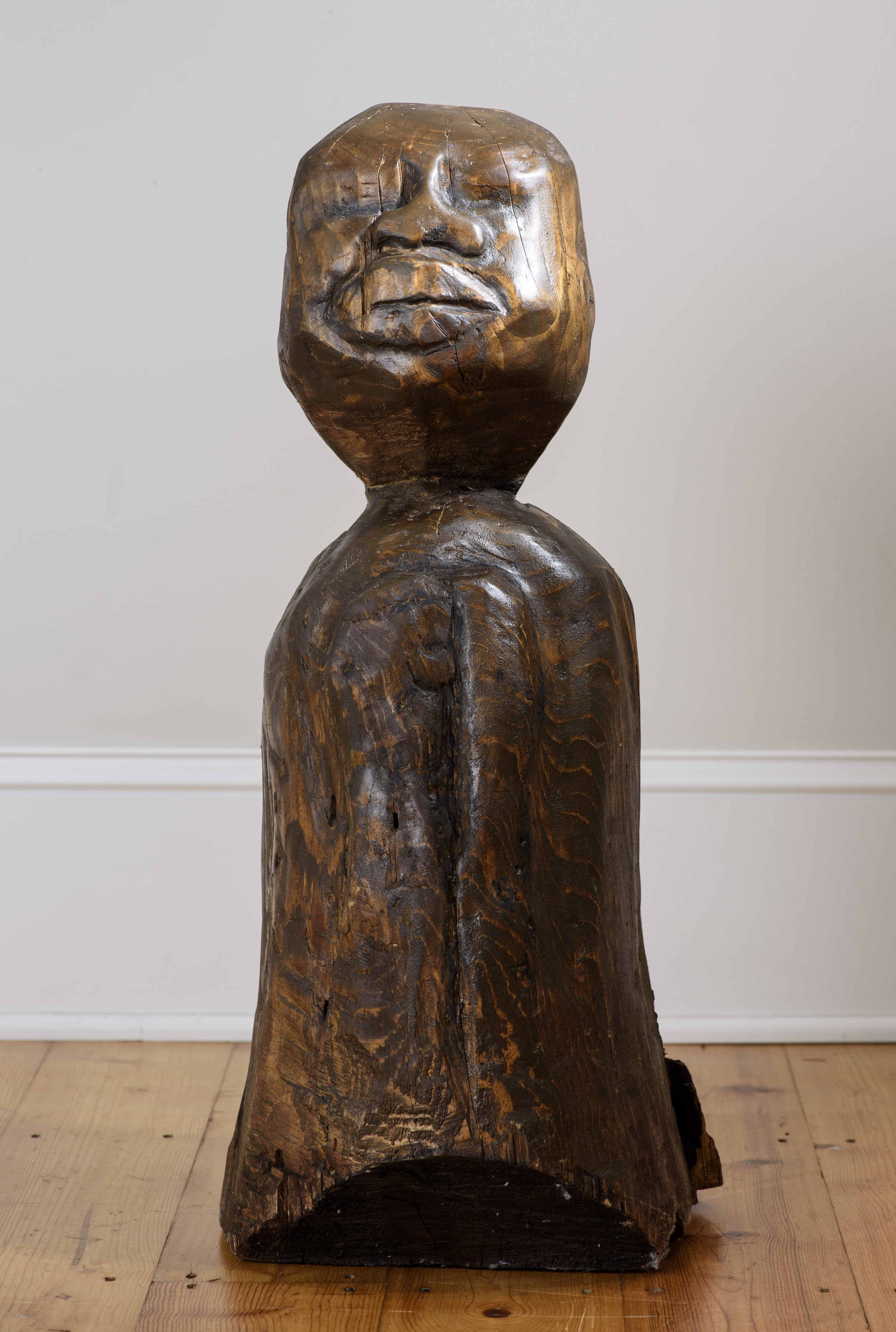
Wood and steel, Size varies
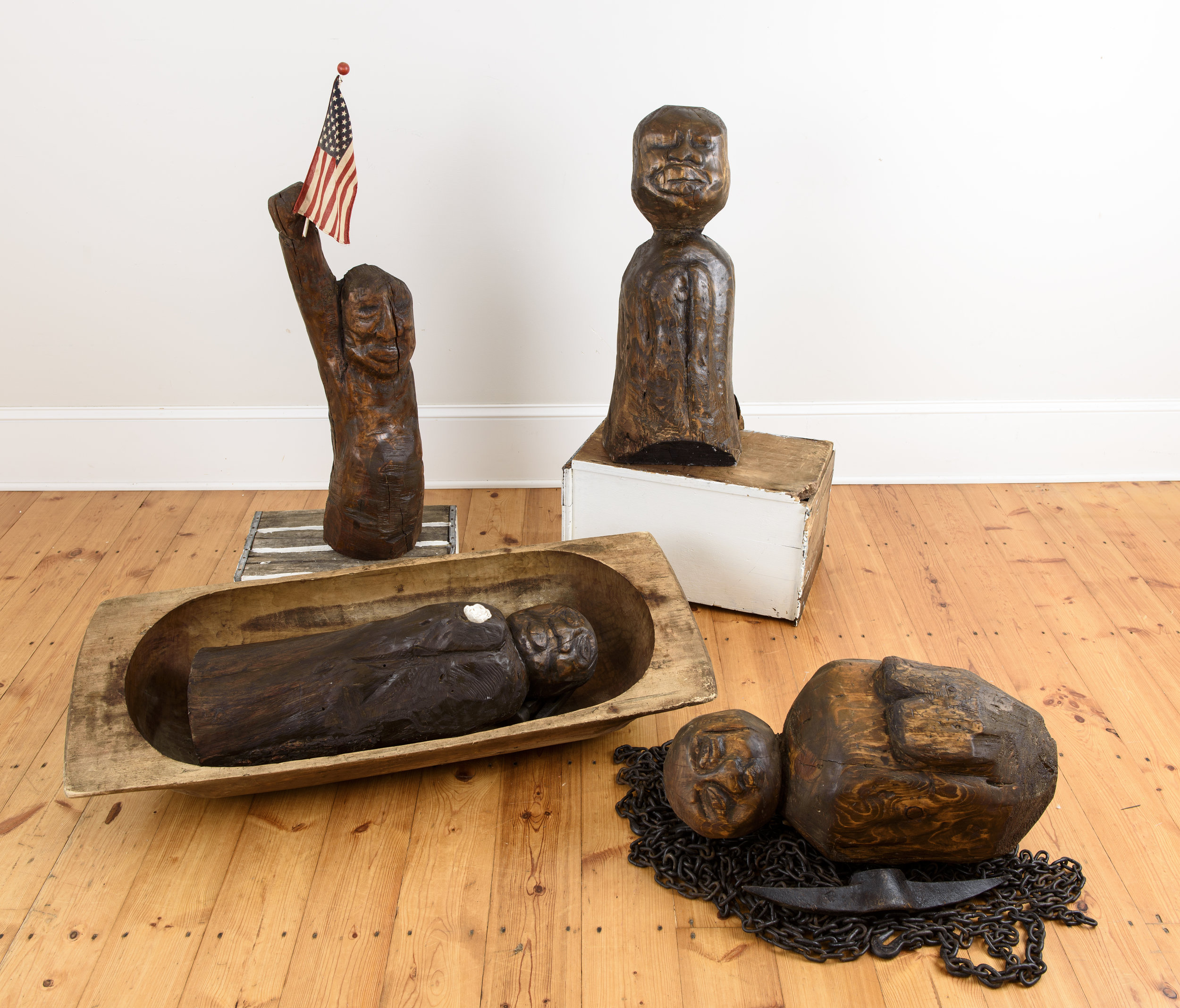
Five figures carved in wood depict the struggles and strength of black men over more than 400 years of American history. Some bloodlines moved freely while others suffered chains or the indignity of being told to move to the back of every line. We must unravel and confront historical truths about inequality and racism.
Wood and steel, Size varies
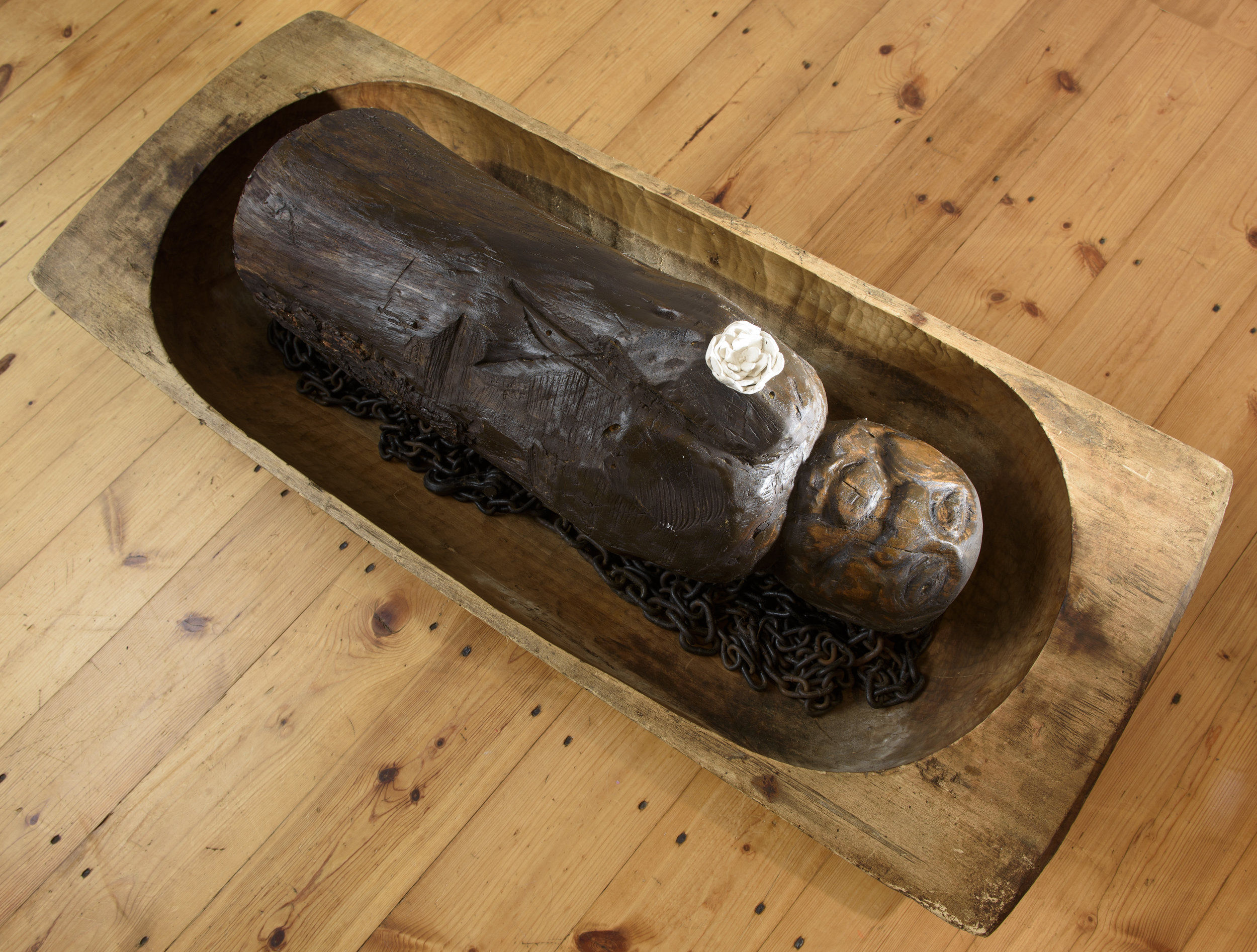
Five figures carved in wood depict the struggles and strength of black men over more than 400 years of American history. Some bloodlines moved freely while others suffered chains or the indignity of being told to move to the back of every line. We must unravel and confront historical truths about inequality and racism.
Wood and steel, Size varies

Ink on canvas, 30”x40”
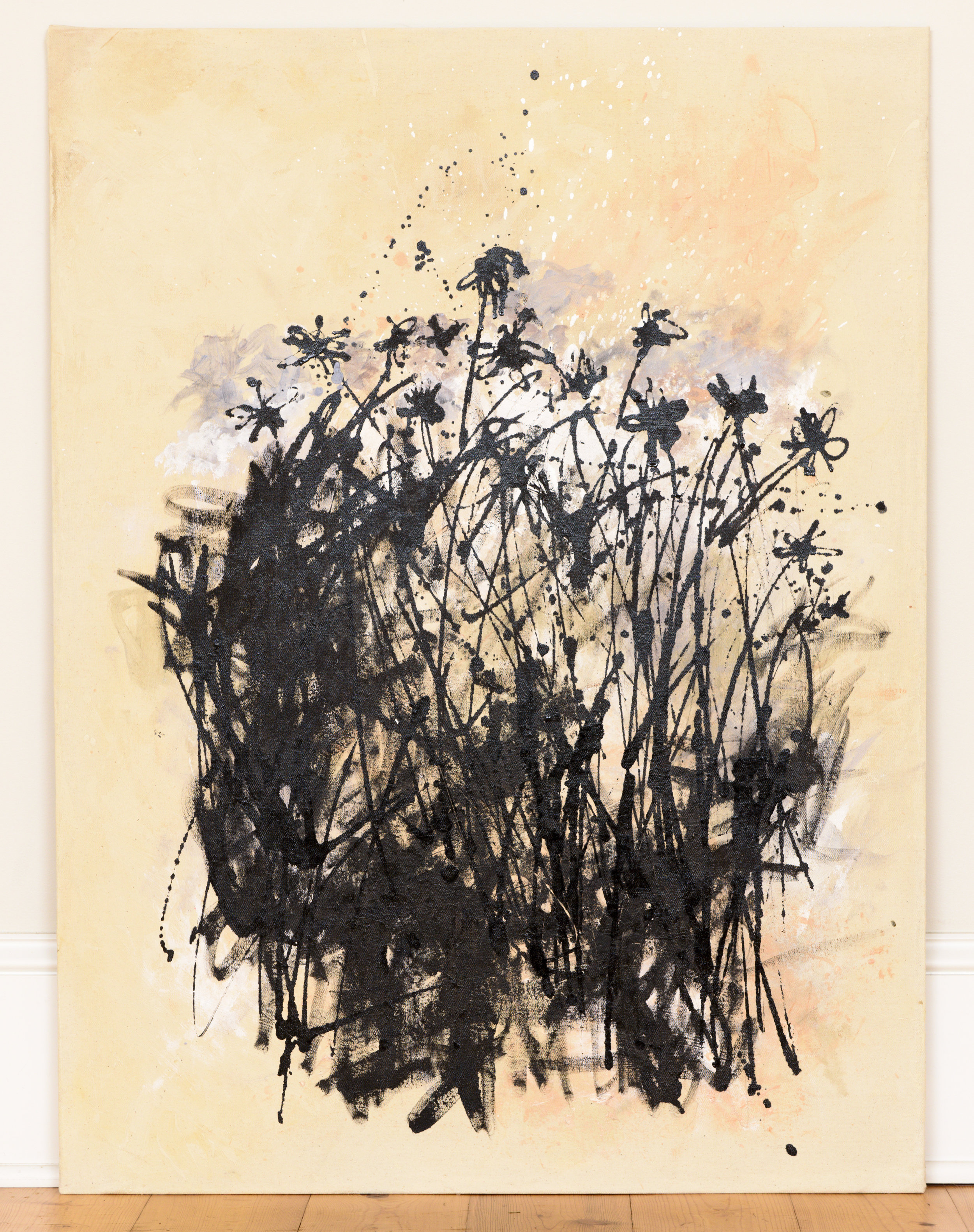
Ink on canvas, 30”x40”
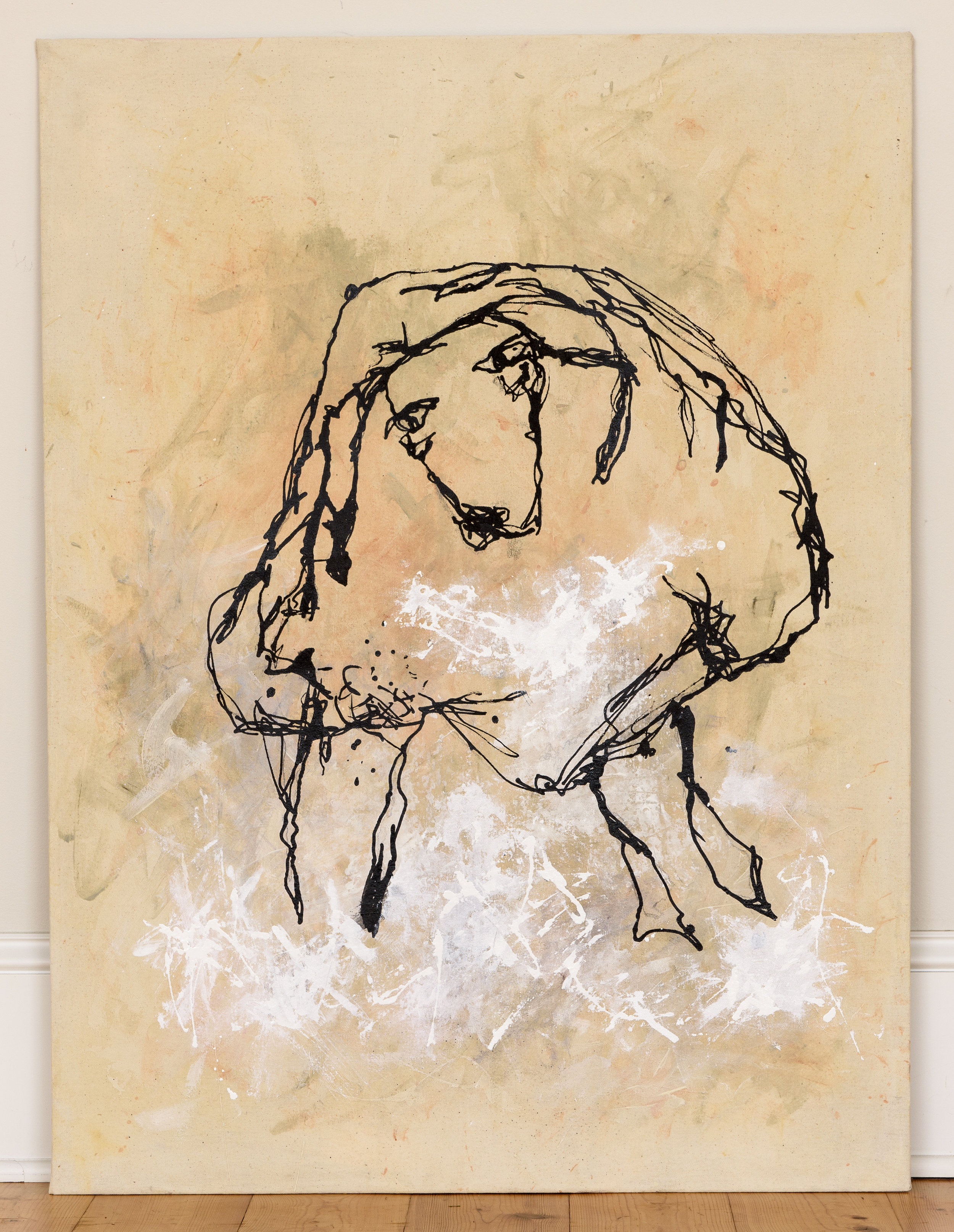
Ink on canvas, 30”x40”
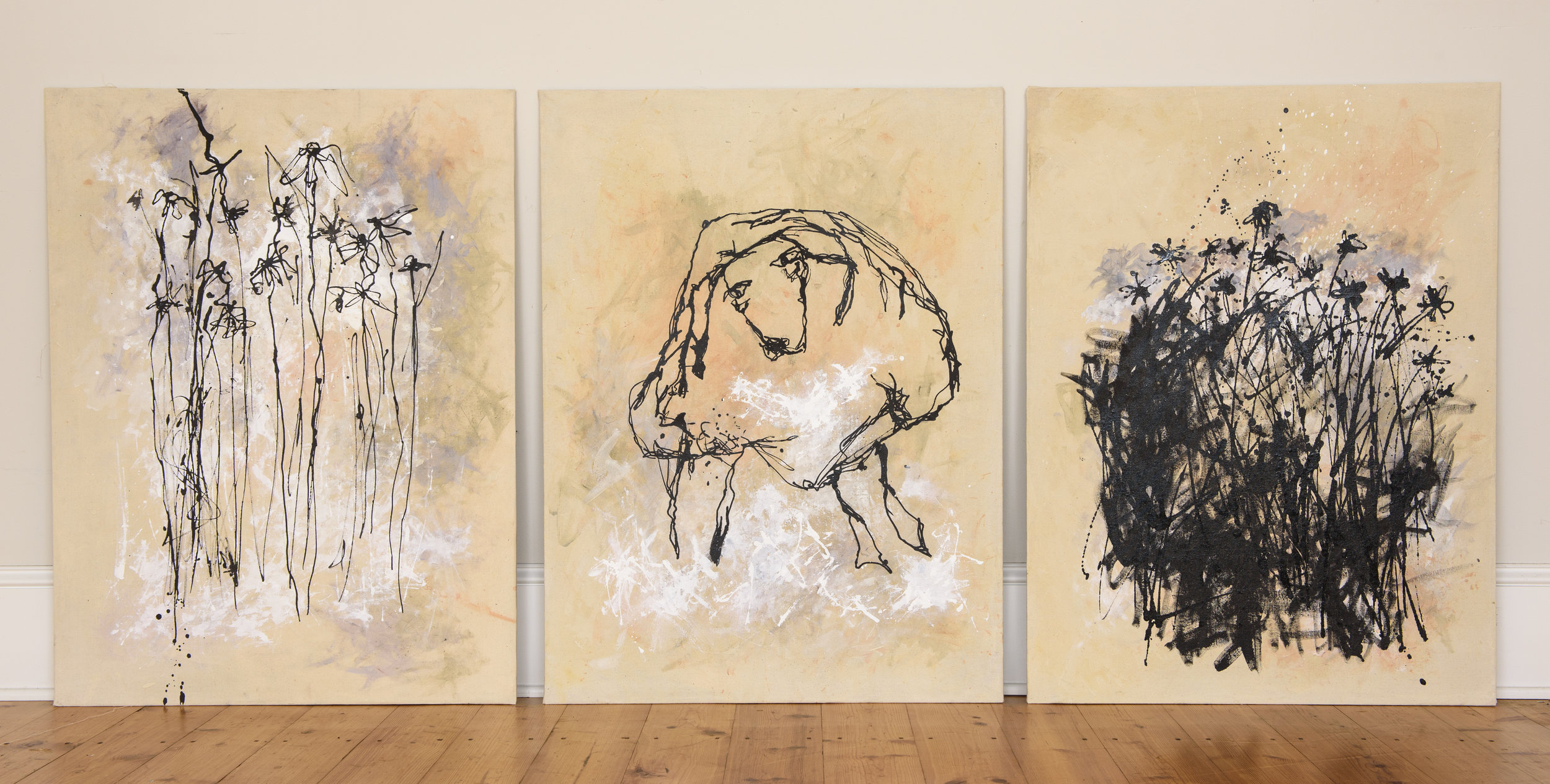
Provocative images starkly drawn in ink suggest that some lives matter less than others—and always have. Communities of people live with air pollution and risk greater exposure to mercury poisoning. They raise families in sight of industrial sprawl and illegal waste dumps. Food deserts persist and children are shackled to neighborhoods without access to affordable, nutritious food options. Green space is non-existent.
Ink on canvas, 30”x40”

“How are the lives of poor women of color controlled and restricted by the fact that they live at this tiny terrible space at the intersection of race, class and gender? And we ask her to move—literally or figuratively. She has to find the words to tell us that she cannot move because she has no room.”- Jacquelyn Boggess
We live in a society that gives privilege and advantage to some and deliberately denies it to others. The portrait’s subject represents women, especially poor and minority women. They are among the most marginalized populations in American society, women who live each day like a survival game. There seem to be many versions of lies that society tells us about being poor? These myths never revel the complexities. Welfare can happen to anyone, but it especially happens to women.
Acrylic, paper and ink on paper, each panel is 31”x 38”

Conceptual daisies are a contrast of nature and industrial danger. Fittings used in oil pipeline installations have a surprising beauty on their own. As envisioned here, they become an argument for greater checks on the increase of massive pipeline projects that disrupt ecosystems and endanger communities.
Steel, acrylic, and wax, size varies
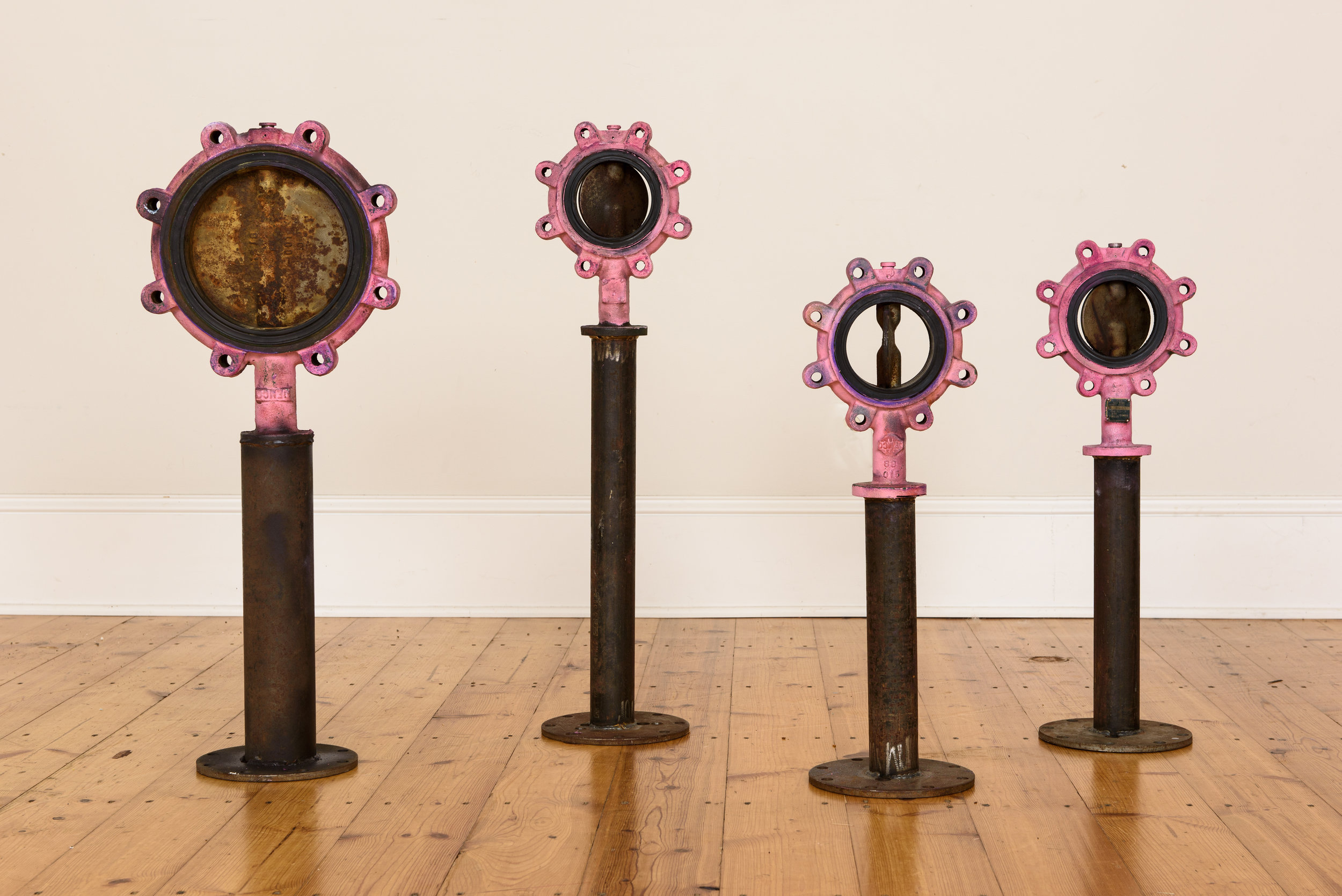
Steel and acrylic, size varies
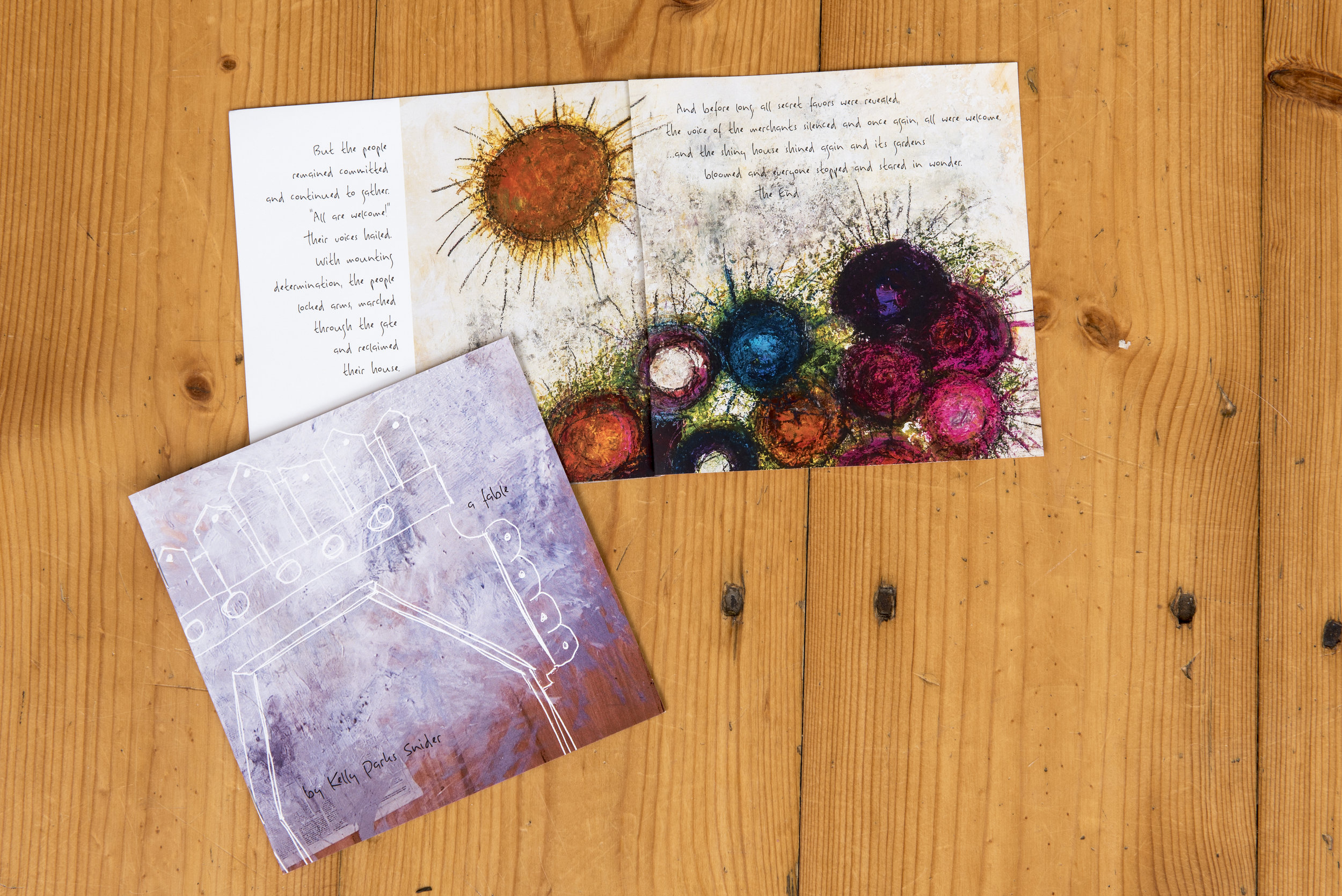
Exhibitition toolkit
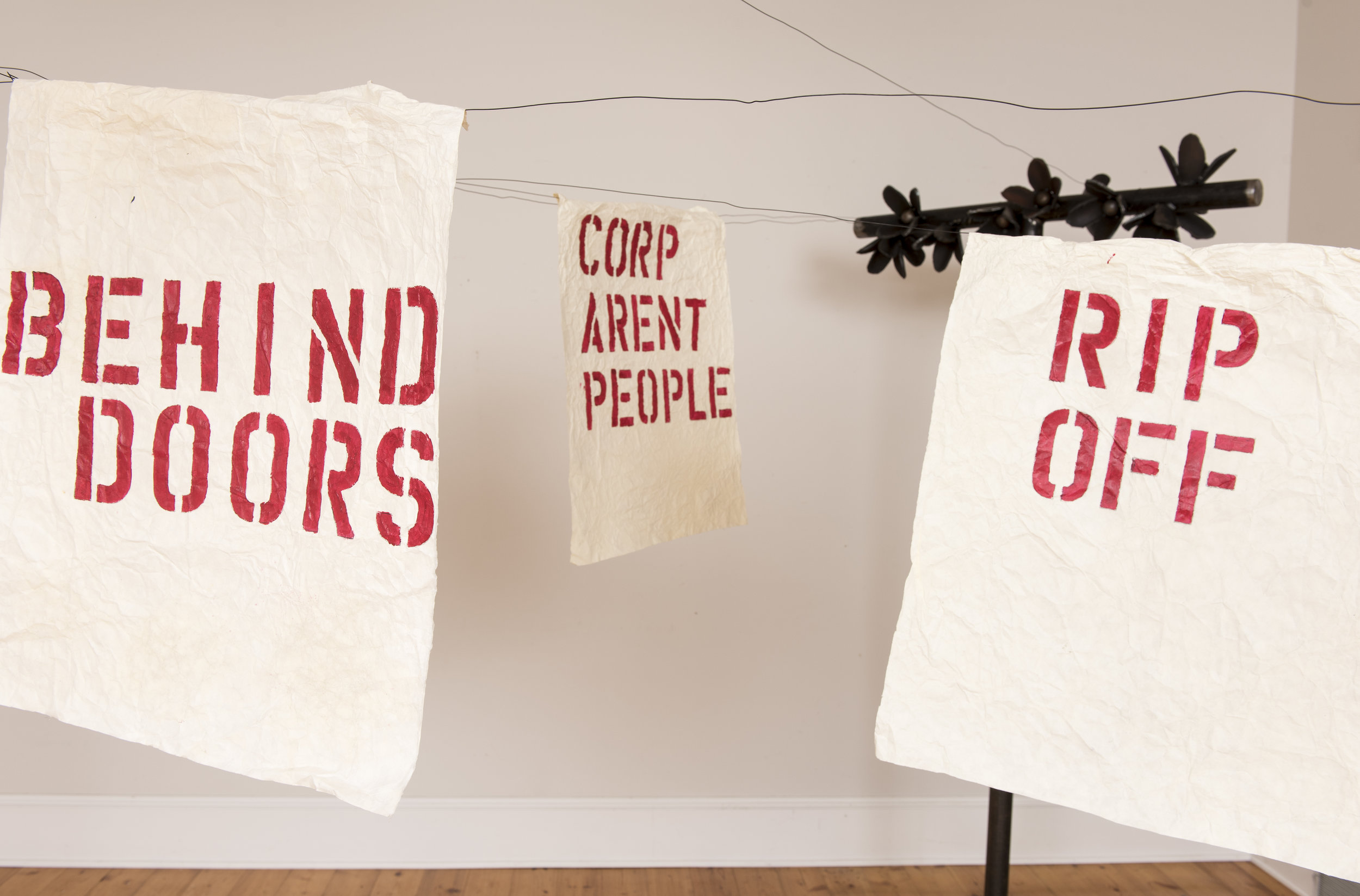
A clothesline of steel-strung with tattered ideals passes judgment on the dark art of buying and selling American democracy. The influence of big money and unlimited amounts of secret money tarnish cherished American ideals. Greed is on display, hung out for the entire world to see.
Clothesline Strung with tattered Ideals Steel and wire, size varies

Steel and wire, size varies

Steel and wire, size varies

Steel and wire, sizes varies
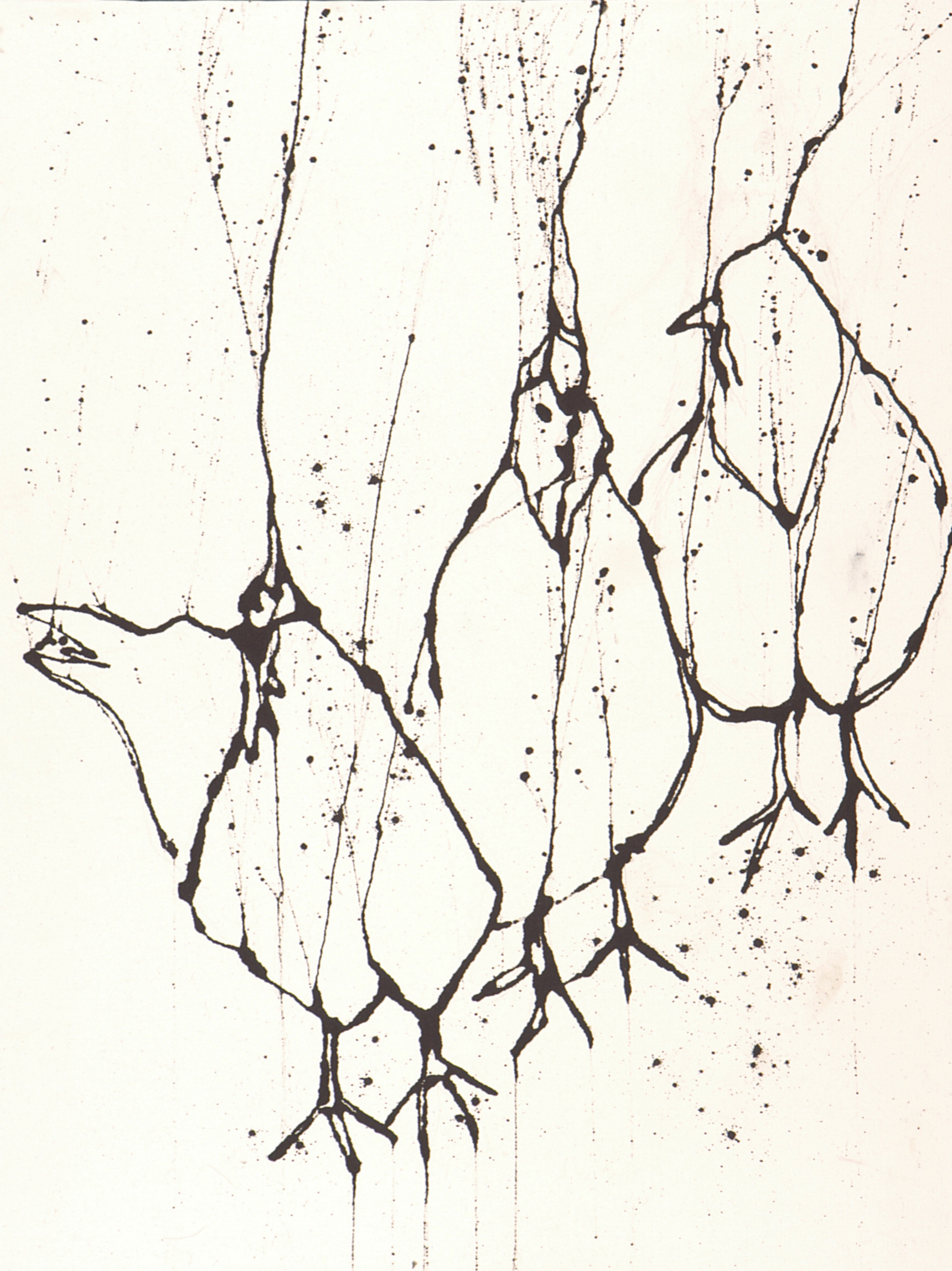
Ink on canvas, 30”x40”
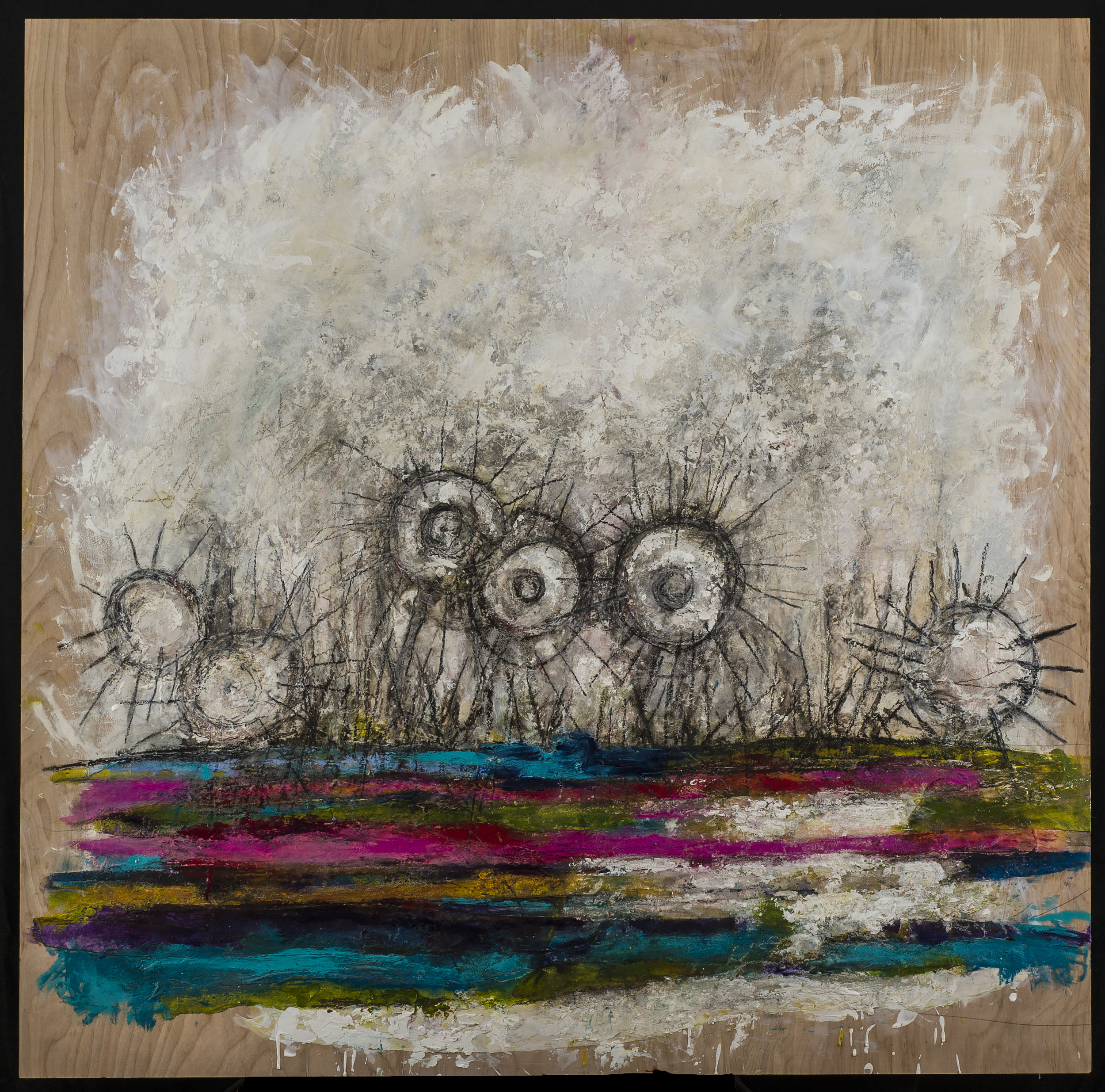
A modern fable that reads like a cautionary tale. Behind small doors are words and sentences that recount how fragile is the myth of democracy. It tells of our time when money controls the debate and billionaires on both sides of the political divide fund political campaigns. Win or lose, they blatantly fuel a powerhouse of interest groups that pressure policymakers at all levels to pass laws favoring a narrow, self-serving agenda.
Oil, encaustic, acrylic, and crayon on wood boards, four boards each 36”x36”
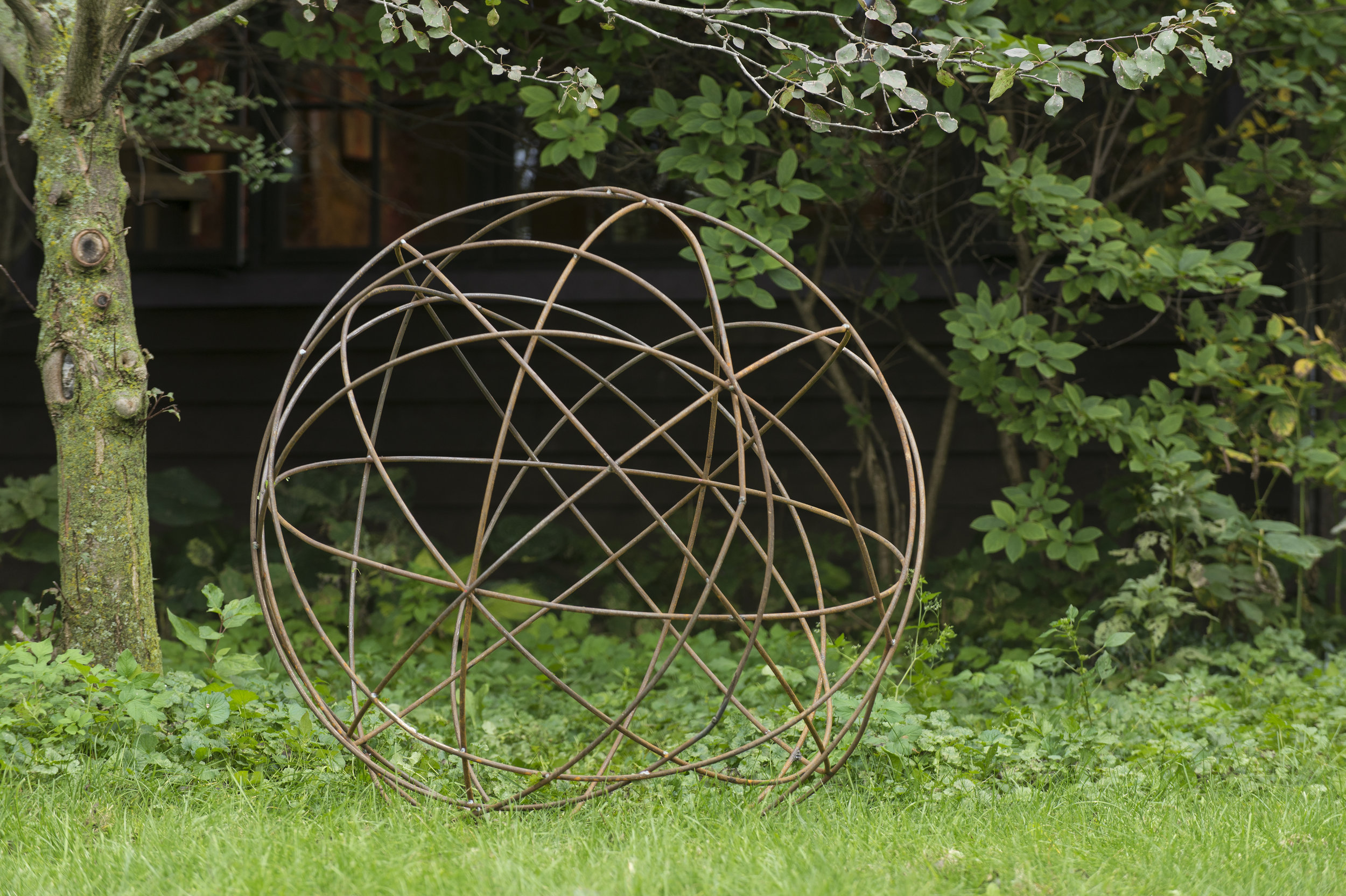
Metal rods bend to intersect in a sphere filled with lines that form numerous three-dimensional circles. History is full of lines. Deliberate lines that exclude some groups from a place in front of the room or the bus, that block the door to opportunity. Lines can keep people out or in. They can draw limits on public morality, deciding who is right and who is wrong. Lines of every type shape our reality. They sustain inequality through blockades, barriers, divisions and voting districts that give new meaning to a crooked line. We construct them. We cross them. We use them for good or ill.
Steel rods, 38”x38”
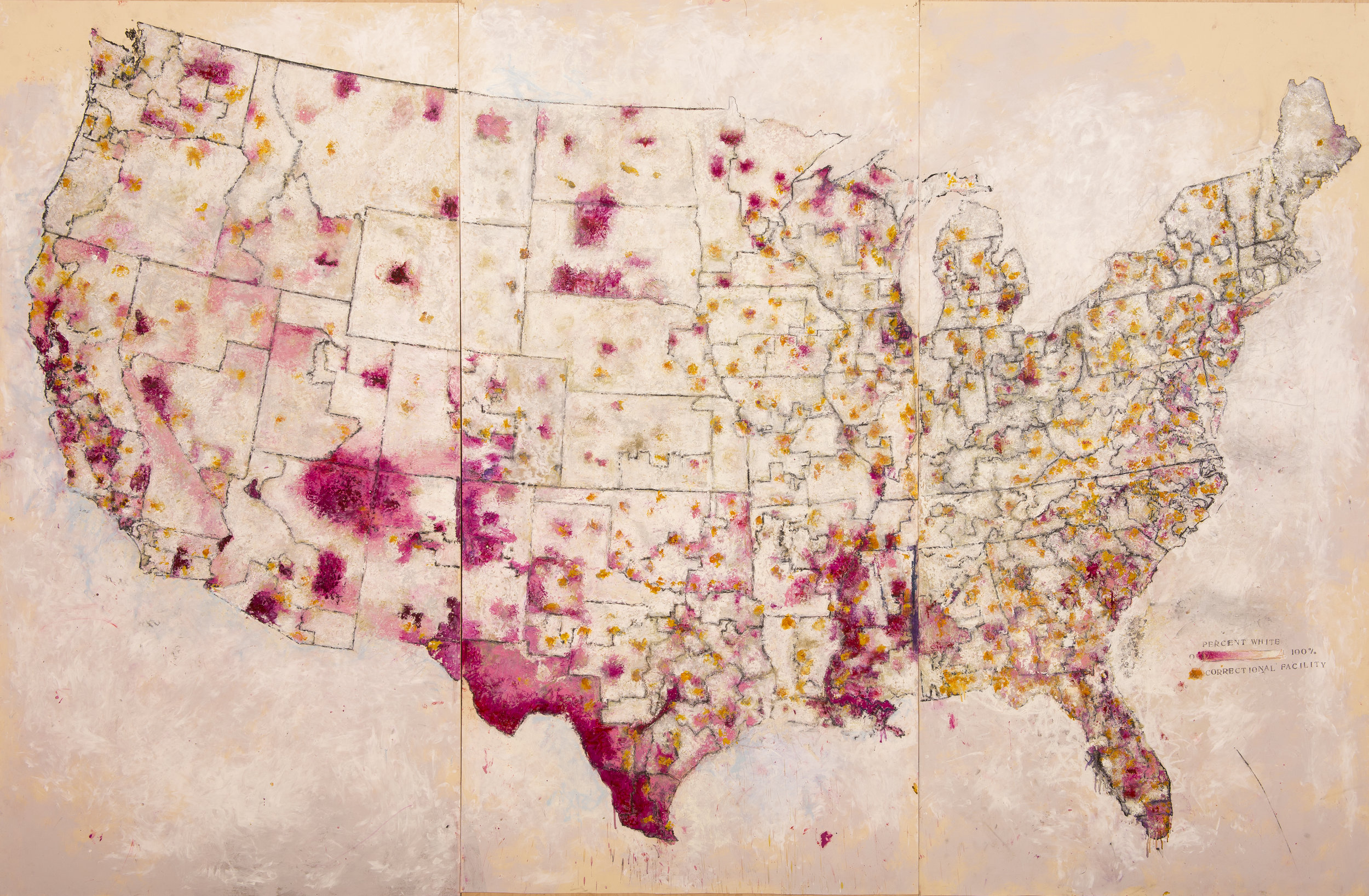
An artful map, a creative expression, a balance between artistry and utility. This colorful and imposing map presents a contest of abstraction that unsettles with its tangled edges and crooked lines. Lines that determine who wins elections, lines that set the rules for which we live, what laws that are passed, the quality of the air we breath and the food we eat. The power lies in the hands of politicians who redraw congressional district boundaries every 10 years. Gerrymandering: The act of skillfully drawing incomprehensible lines that define power, preserve power and dilute power. Whoever draws the best lines wins and controls Congress for ten years or more. This map of the United States bleeds pink where minority communities are segregated by lines. Areas of yellow on the map identify the location of federal and state prisons, islands of people counted in the census who cannot vote. Out of sight, out of mind.
Oil, acrylic, encaustic, and crayon on wood boards, three panels each 44”x 87”

Steel and acrylic, size varies
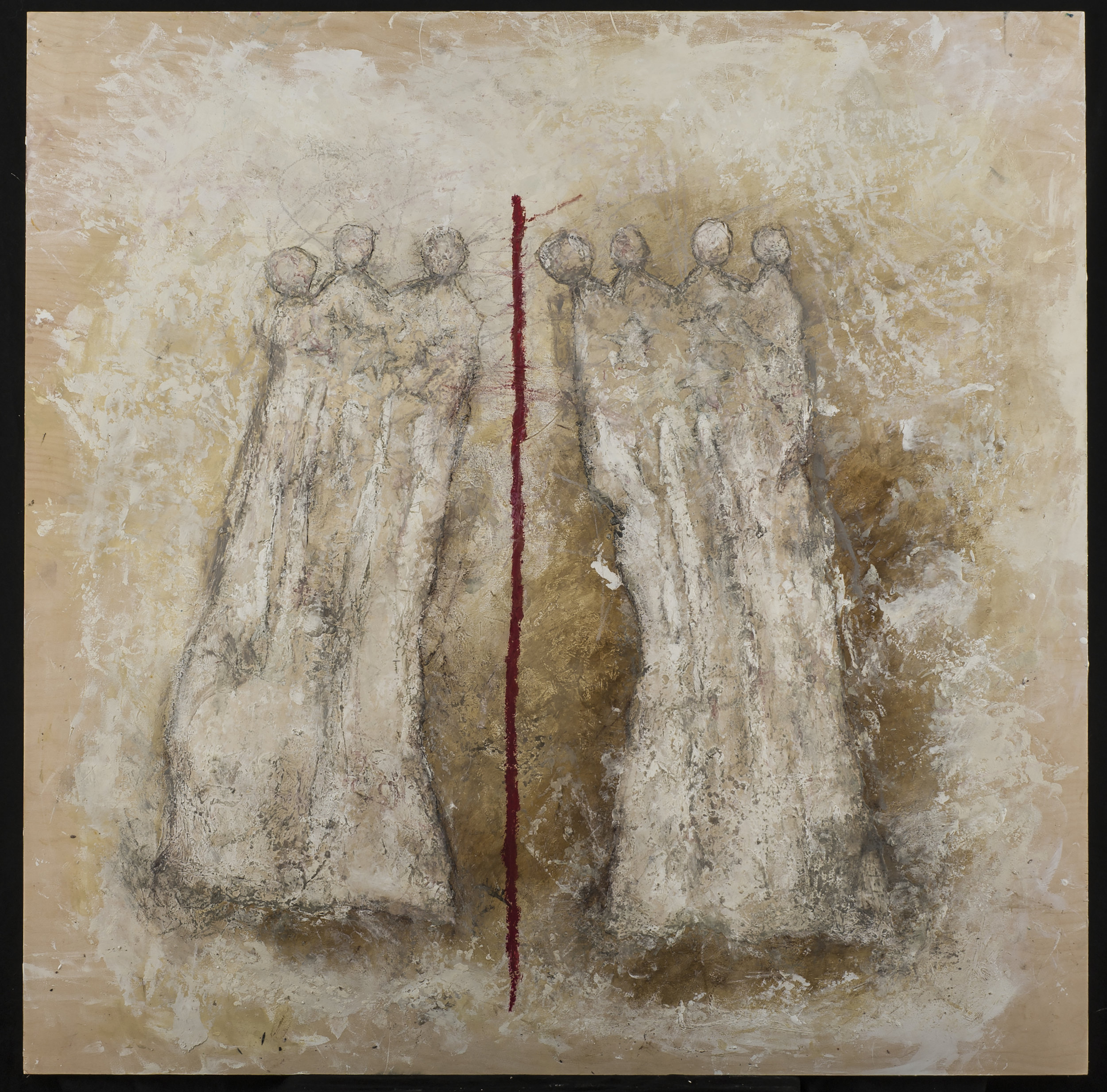
Oil, encaustic, acrylic and crayon on 36” x 36” wood boards
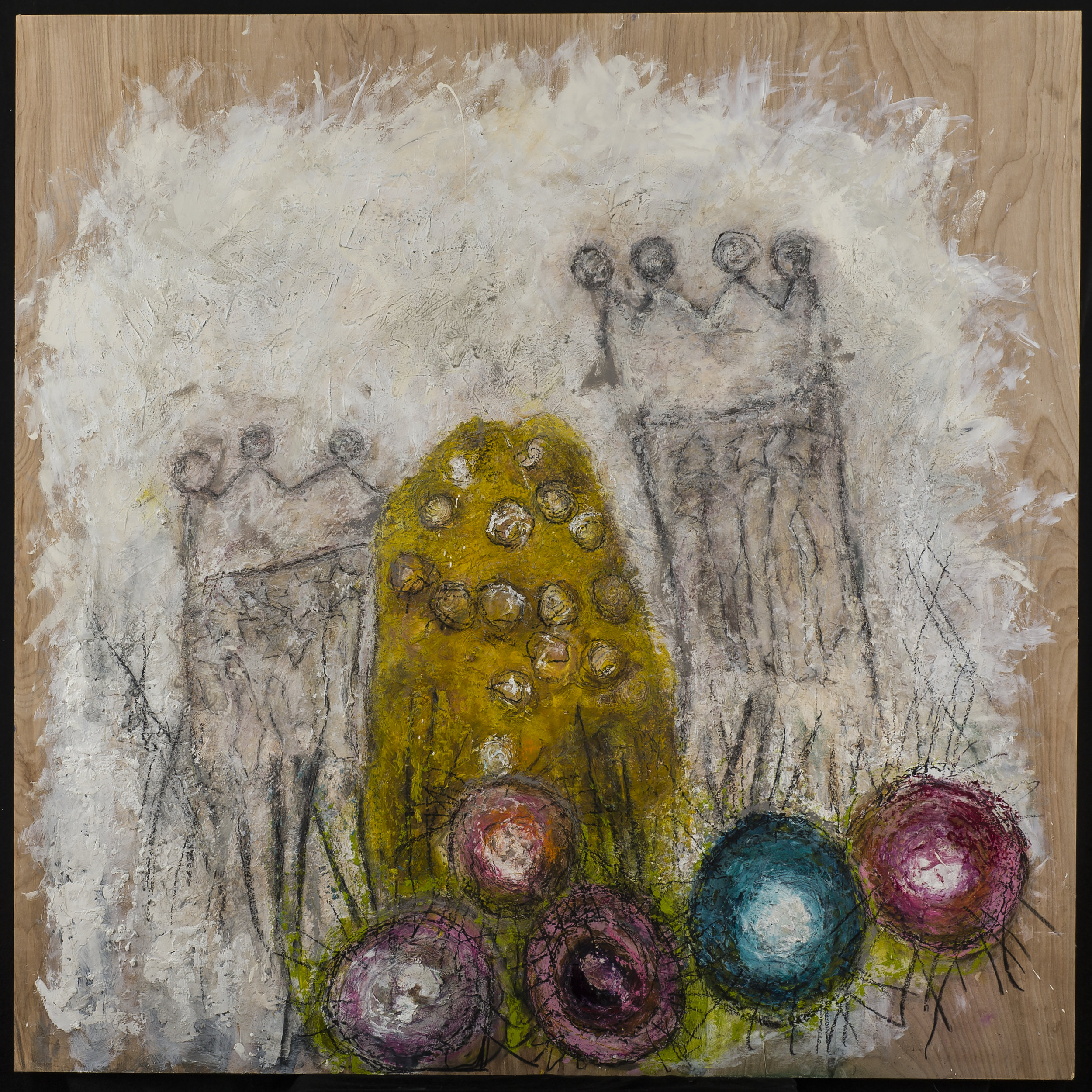
Oil, encaustic, acrylic, and crayon on 36” x 36” wood boards

Oil, encaustic, acrylic and crayon on 36” x 36”wood boards
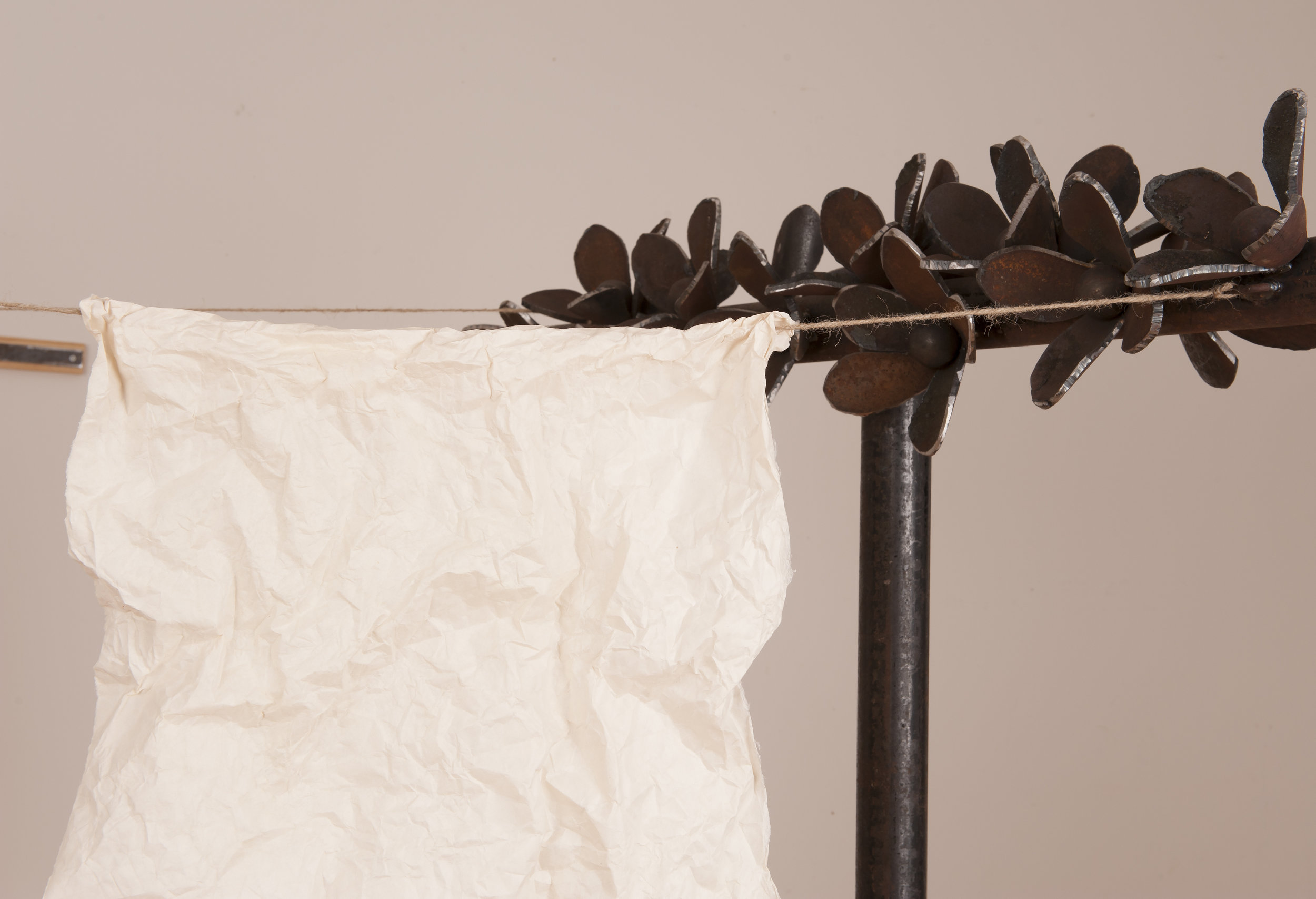
Steel and wire, size varies
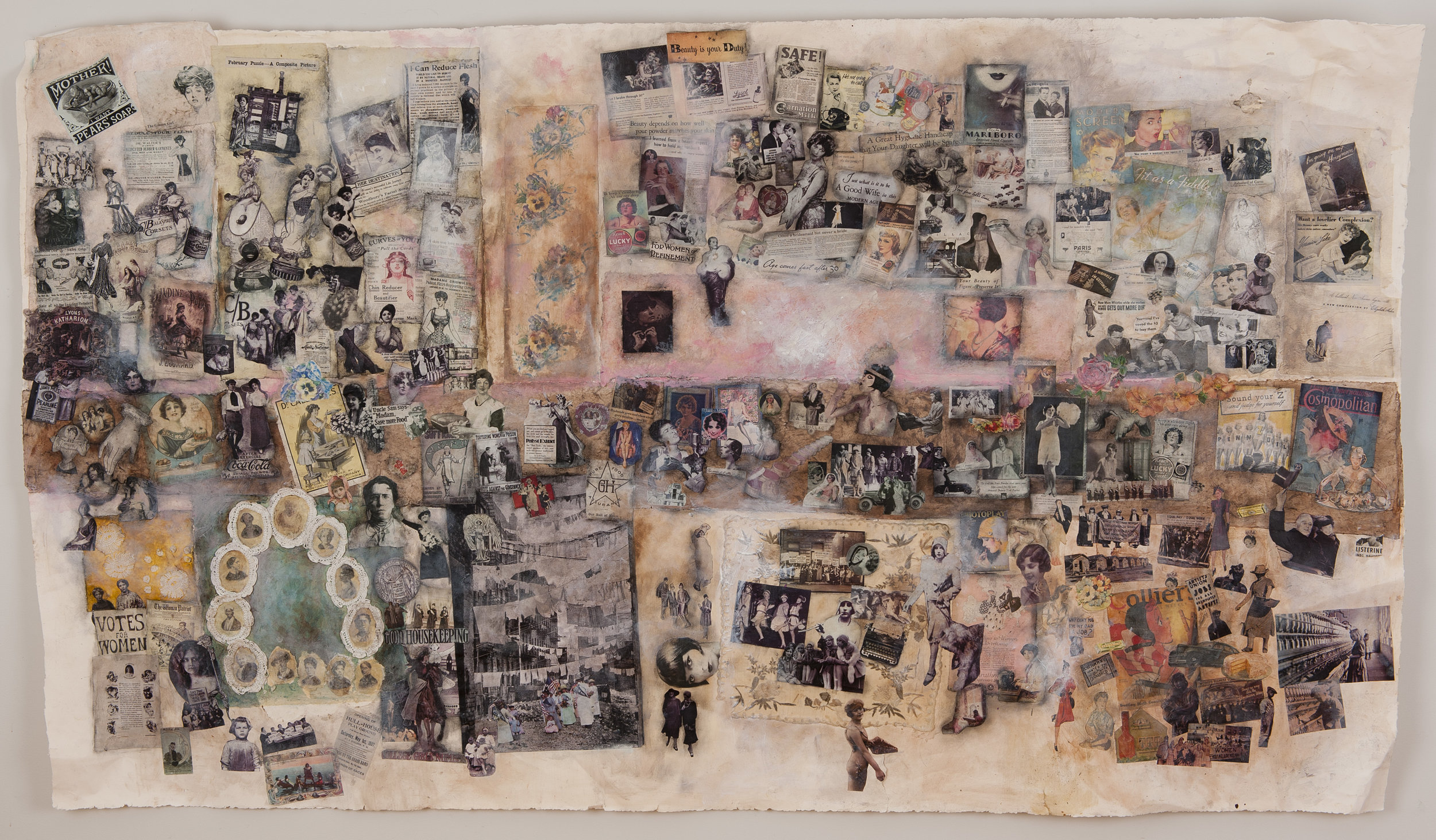
Insistent, strongly targeted marketing images and catchy, convincing slogans. A three-panel collage juxtaposes woman’s century of struggle for equality against these calling cards of advertising. Below the horizontal line lies the truth of her protests, and her victories over the decades. Above the line, the many lies and misrepresentations of the advertising industry. The final panel depicts where society is now, not knowing what is real and true.
Oil, watercolor, pencil, fabric, encaustic, newspaper, printed reproductions, photographs on wood boards.Three panels each 4’x7. 5’
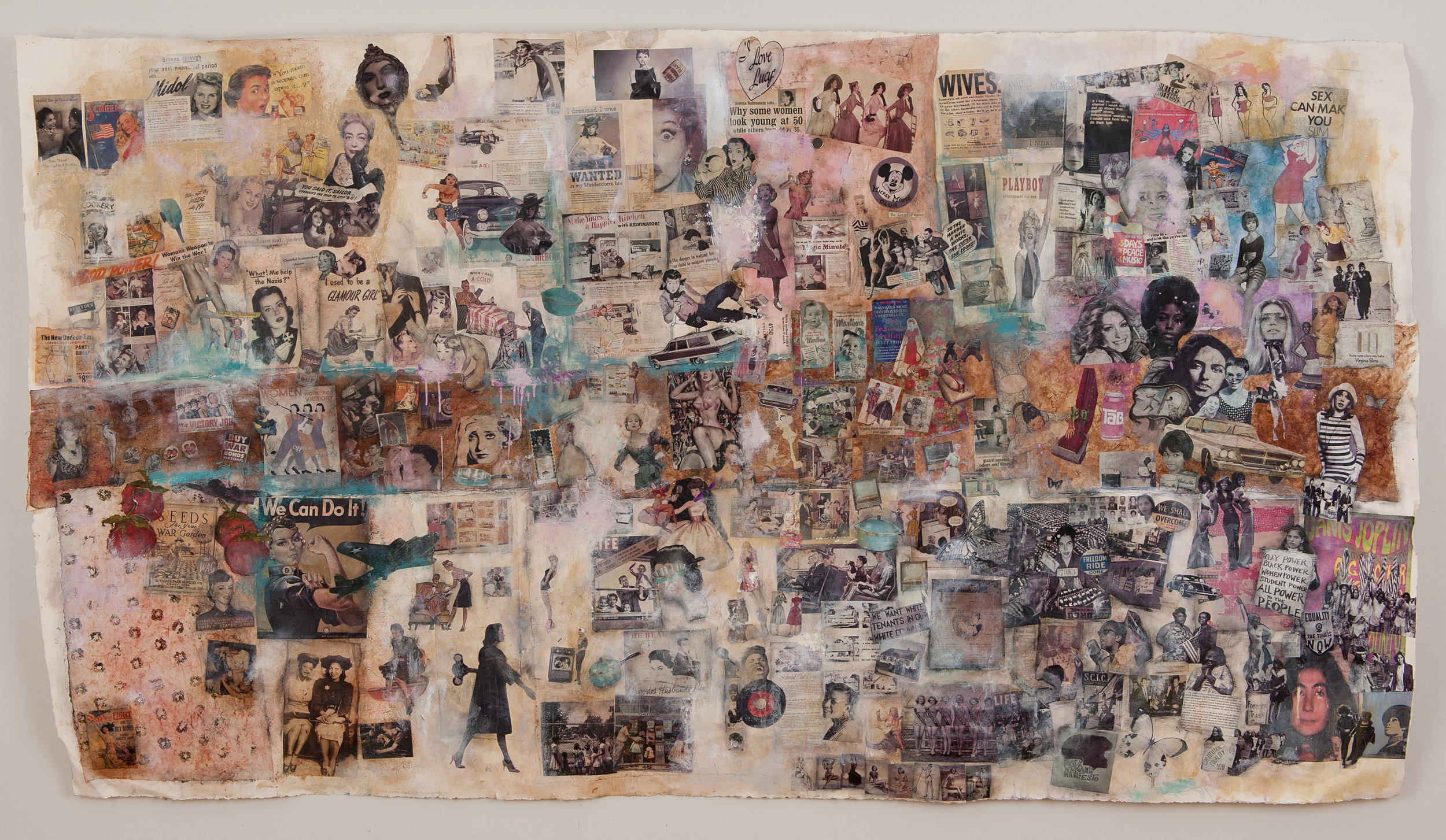
Insistent, strongly targeted marketing images and catchy, convincing slogans. A three-panel collage juxtaposes woman’s century of struggle for equality against these calling cards of advertising. Below the horizontal line lies the truth of her protests, and her victories over the decades. Above the line, the many lies and misrepresentations of the advertising industry. The final panel depicts where society is now, not knowing what is real and true.
Oil, watercolor, pencil, fabric, encaustic, newspaper, printed reproductions, photographs on wood boards.Three panels each 4’x7. 5’

Five figures carved in wood depict the struggles and strength of black men over more than 400 years of American history. Some bloodlines moved freely while others suffered chains or the indignity of being told to move to the back of every line. We must unravel and confront historical truths about inequality and racism.
Wood and steel, Size varies

Five figures carved in wood depict the struggles and strength of black men over more than 400 years of American history. Some bloodlines moved freely while others suffered chains or the indignity of being told to move to the back of every line. We must unravel and confront historical truths about inequality and racism.
Wood and steel, Size varies


Five figures carved in wood depict the struggles and strength of black men over more than 400 years of American history. Some bloodlines moved freely while others suffered chains or the indignity of being told to move to the back of every line. We must unravel and confront historical truths about inequality and racism.
Wood and steel, Size varies
